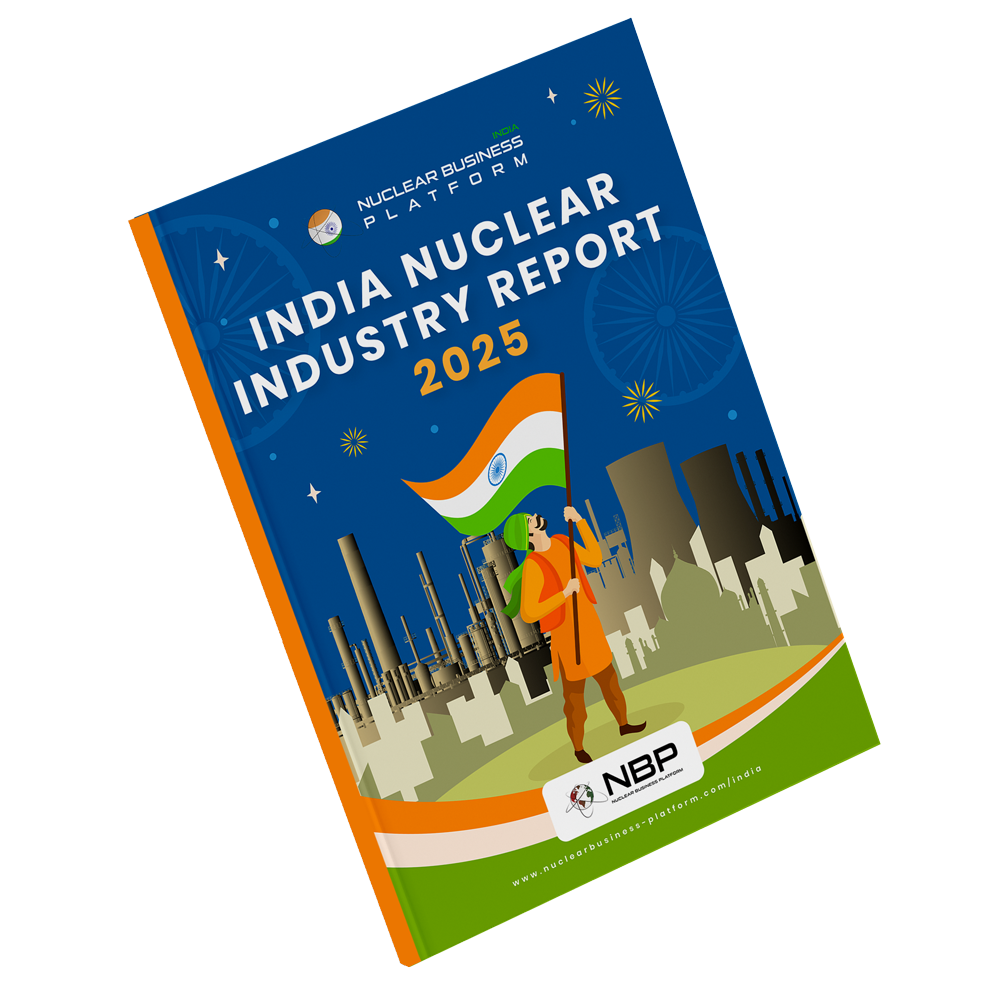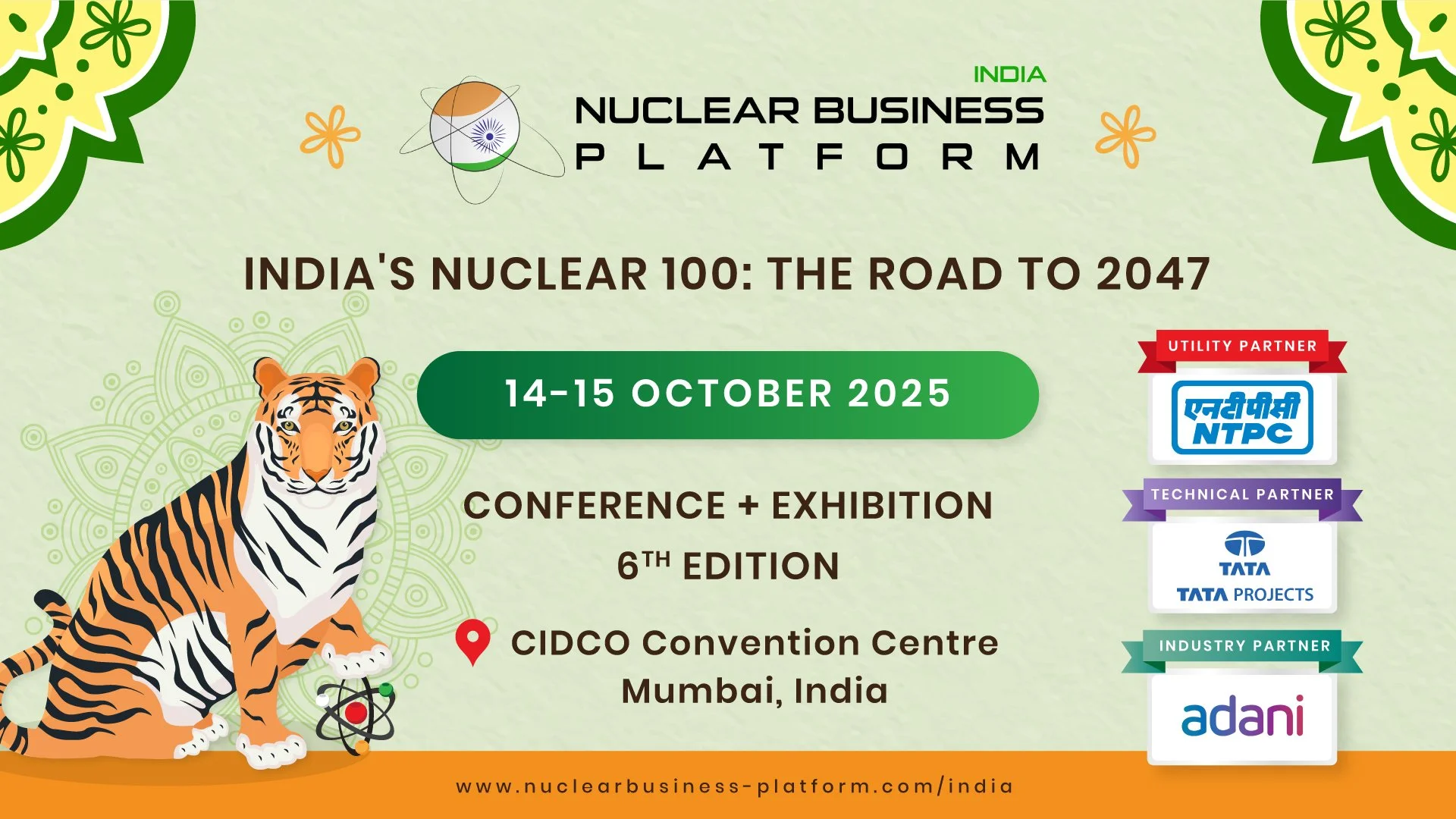India’s Nuclear Reactor Export Opportunities: From Indigenous Innovation to Global Supplier
For decades, India’s nuclear energy journey has been marked by persistence, innovation, and steady progress. From developing its own reactor designs to building a growing fleet of power plants, the country has nurtured a strong domestic industry. Now, a new phase is unfolding: India is preparing to take its home-grown nuclear technology to international markets.
A recent trade development has further accelerated this momentum—Britain has removed import duties on Indian-built reactors, opening the door for Indian nuclear technology to compete globally. At the same time, India has set one of the most significant nuclear expansion targets in the world: 100 GW of installed capacity by 2047, a massive leap from the 8.88 GW operating in mid-2025. Achieving this goal—central to the Viksit Bharat 2047 vision and the nation’s Net Zero 2070 commitment—will require adding more than 4 GW of nuclear capacity every year for the next two decades. For nations seeking reliable, cost-effective, and clean energy solutions, India is positioning itself not just as a consumer of nuclear power, but as a future supplier to the world.
From Import Substitution to Export Readiness
The foundation of this export ambition lies in India’s Pressurised Heavy Water Reactors (PHWRs), indigenously developed after the 1970s when access to international nuclear technology was cut off. What began as an adaptation of Canada’s CANDU design soon evolved into unique Indian variants. Over time, these reactors not only formed the backbone of the country’s domestic programme but also became a symbol of its self-reliance.
The fleet includes the compact IPHWR-220, widely deployed across the country; the 540 MWe version operating at Tarapur; and the flagship IPHWR-700, a Generation III+ reactor equipped with advanced safety systems such as passive decay heat removal, containment sprays, and steel-lined containment walls. Together, these reactors showcase a spectrum of Indian nuclear expertise — scalable, indigenous, and globally comparable.
But while PHWRs continue to drive India’s domestic expansion, the future of exports rests on a new family of designs: Bharat Small Reactors (BSRs) and Bharat Small Modular Reactors (BSMRs).
The Rise of Bharat Small Reactors
BSRs represent India’s attempt to shrink nuclear power into a form that is nimble, flexible, and more aligned with industry needs. Built as compact 220 MWe PHWRs, these reactors retain the safety and performance record of their larger predecessors but are optimised for deployment near heavy industries such as steel, aluminium, and other metals.
The idea is simple: while large gigawatt-scale reactors suit national grids, smaller units can act as captive power plants, providing clean, reliable electricity directly to factories and industrial clusters. For energy-intensive sectors struggling to decarbonise, BSRs could become a practical solution.
India’s proposed business model for BSRs is also noteworthy. Under the plan, private players provide land, water, and capital, while the Nuclear Power Corporation of India Limited (NPCIL) takes charge of design, quality control, and operations. This approach allows industries to integrate nuclear power into their supply chains without having to master its complexities themselves. It is a model that blends state expertise with private investment, and one that could easily be extended to export markets.
The timing is strategic. At the COP26 climate summit in Glasgow, India pledged to generate 500 GW of non-fossil fuel energy by 2030 and meet 50% of its energy needs from renewables. Small nuclear reactors, working alongside renewables, could play a pivotal role in achieving these targets while creating exportable technology that other developing nations might find equally valuable.
The Promise of Small Modular Reactors
If BSRs represent India’s present opportunity, Small Modular Reactors (SMRs) are the future. These advanced reactors, typically generating between 30 and 300 MWe, are designed for flexibility, scalability, and cost-effectiveness. Their modular construction — factory-built units that can be shipped and assembled on-site — dramatically reduces construction timelines and financial risks, which are the biggest hurdles in nuclear power.
India’s BSMRs are being designed with multiple variants: a 200 MWe model, a 55 MWe version, and even a 5 MWe ultra-small reactor. Some are being developed to produce not just electricity but also hydrogen, a fuel central to the global clean energy transition. Others are being explored for applications in desalination or repurposing retiring coal plant infrastructure.
The Bhabha Atomic Research Centre (BARC) is leading the charge, while the Department of Atomic Energy (DAE) is considering next-generation designs such as high-temperature gas-cooled reactors and molten salt reactors — the latter tapping into India’s abundant thorium reserves.
Recognising the strategic importance of SMRs, the Indian government launched a Nuclear Energy Mission in the 2025–26 Union Budget, allocating Rs. 20,000 crore for SMR research and development. The target: at least five indigenously designed and operational SMRs by 2033.
Britain Opens the Door
The clearest sign that India’s nuclear technology is gaining global acceptance came in July 2024, when Britain agreed to eliminate the 4% import duty on Indian-built nuclear reactors under the Comprehensive Economic Trade Agreement (CETA). This marks the first instance of India securing zero-duty access for nuclear technology in any trade deal.
For the UK, which is investing heavily in nuclear to meet its net-zero target by 2050, Indian SMRs are a timely opportunity. Britain plans to add 25 GW of nuclear capacity by mid-century, and cost-competitive modular reactors could play a central role.
For India, the deal is more than symbolic. As one senior official put it, “Exporting is the natural next step for NPCIL — similar to what we’ve seen in the defence sector with ‘Made in India’ products now going global. Our BSRs are significantly cheaper than those from the West.”
Competing on Cost
In the global nuclear market, cost is king. While Russia and South Korea have earned reputations for efficiency, India believes it can undercut both. Analysts estimate that Indian BSRs are at least 50% cheaper than South Korean reactors, which are currently seen as the most cost-effective after Russia. Compared to American and French reactors, India’s offerings look even more affordable.
This cost advantage is coupled with a strong safety record. Radiation levels at Indian facilities are consistently well below international benchmarks, reflecting rigorous oversight. This matters in export markets, where safety standards are non-negotiable.
Global Markets in Sight
The prospects for India’s nuclear exports stretch far beyond Britain. Several regions stand out as natural markets for Indian SMRs.
In Asia, countries such as Indonesia and the Philippines, with their fragmented island grids and ageing coal plants, are emerging as prime candidates for modular reactors. Indian designs, particularly small modular reactors (SMRs), could provide distributed power while helping these nations decarbonise.
Africa, too, is fast becoming a fertile ground for nuclear deployment. Chronic electricity shortages have long held back industrial growth, but SMRs could change that—supplying reliable power to industrial parks, mining operations, and even supporting desalination in water-scarce regions. According to the Nuclear Business Platform (NBP), Africa is projected to have around 15 GW of nuclear capacity installed by 2035, a huge leap that opens clear opportunities for India to position its reactors as affordable, adaptable solutions for the continent’s growth ambitions.
Meanwhile in Eastern Europe, countries like Poland—eager to shed their coal dependence—are actively exploring nuclear power as a stable, decarbonised backbone for their energy systems. Here, Indian SMRs could prove attractive, supplying consistent electricity to energy-hungry industries ranging from heavy manufacturing to fast-expanding data centres.
Together, these regions represent billions of dollars in potential export markets — and India’s combination of affordability, scalability, and proven expertise positions it well to compete.
Building at Home, Selling Abroad
India is not losing sight of its domestic needs even as it looks outward. The country aims to increase nuclear capacity from 8.88 GW today to 22.48 GW by 2031–32, with a long-term target of 100 GW by 2047.
To achieve this, the government is planning amendments to the Atomic Energy Act and the Civil Liability for Nuclear Damage Act to allow greater private and foreign participation in financing and construction. NPCIL will continue to oversee operations, but the financial burden will increasingly be shared with private partners.
This dual-track approach — expanding at home while exporting abroad — mirrors the trajectory of other strategic sectors in India, such as defence manufacturing. Once inward-looking, they are now oriented towards global markets. Nuclear energy may be about to follow the same path.
A Turning Point
India’s nuclear programme, once viewed primarily as a domestic solution to its energy needs, now stands on the threshold of becoming an export-driven industry. The elimination of tariffs in Britain, the rising global demand for small modular reactors (SMRs), and India’s cost competitiveness all suggest that the country could emerge as a major player in the international nuclear marketplace.
The opportunity is substantial. As countries seek reliable, low-carbon energy, India’s reactors offer a rare combination: safe, scalable, and affordable solutions. With the right policies and partnerships, India could transition from being a consumer of nuclear technology to one of its most significant global suppliers.
A key milestone in this journey will be the 6th India Nuclear Business Platform (INBP) 2025, scheduled for 14–15 October 2025 in Mumbai. This premier forum will bring together policymakers, global stakeholders, and industry leaders to shape the next phase of India’s nuclear trajectory—aligning workforce strategies with technology rollouts, financing models, and international partnerships.
For businesses and policymakers alike, the message is clear: India’s nuclear sector is no longer just about powering domestic growth—it is about shaping the future of global energy.



